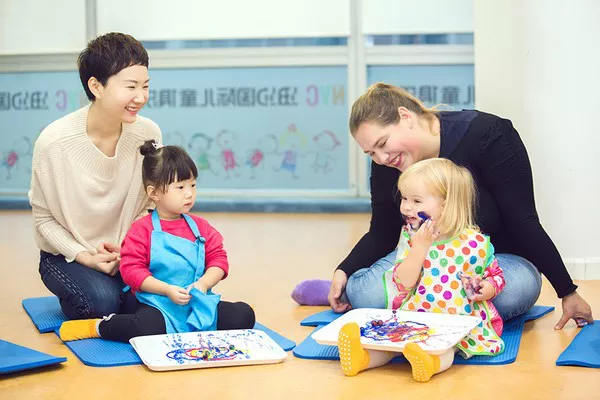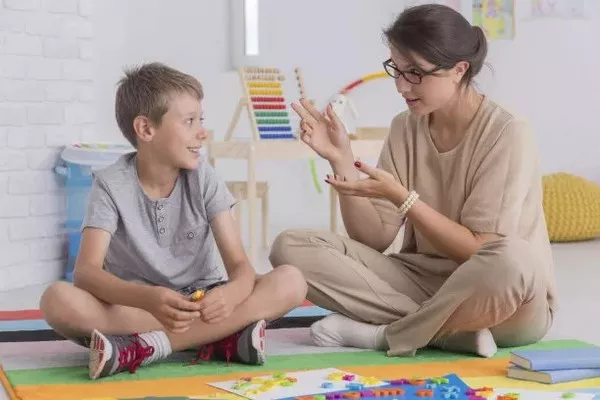Trust is the cornerstone of any healthy relationship, whether romantic, familial, or platonic. It acts as a binding agent that fosters open communication, emotional intimacy, and resilience in the face of challenges. However, trust is often misunderstood; it is not merely the absence of suspicion or doubt but a multi-dimensional construct built over time through consistent behavior, mutual respect, and emotional support. As a psychologist, I frequently engage with clients who struggle with trust issues in their relationships, and I understand how vital it is to cultivate and recognize trust as a critical component of relational health. This article will explore what trust in a relationship looks like, its various dimensions, how it can be nurtured, and the factors that can erode it.
Understanding Trust
The Nature of Trust
Trust is a psychological state that involves a belief in the reliability, integrity, and competence of another person. In relationships, trust means that individuals feel secure enough to be vulnerable, share their thoughts and feelings, and rely on each other in times of need. This sense of security is crucial for emotional well-being and relationship satisfaction.
Dimensions of Trust
Trust can be broken down into several dimensions, including:
Reliability: This refers to the consistency of a partner’s actions over time. Reliable individuals follow through on their commitments, creating a sense of predictability that is essential for fostering trust.
Honesty: Transparency and truthfulness are vital for building trust. Partners must feel confident that the information they share and receive is accurate and sincere.
Emotional Safety: Trust creates an environment where individuals can express their vulnerabilities without fear of judgment or ridicule. Emotional safety allows for open discussions about feelings, concerns, and desires.
Respect: Mutual respect is foundational for trust. Partners should value each other’s opinions, feelings, and boundaries, contributing to a trusting atmosphere.
Support: Trust grows in an environment where partners support one another’s goals, dreams, and challenges. This supportive behavior fosters a sense of connection and loyalty.
Trust as a Dynamic Process
It’s essential to recognize that trust is not a static state; it evolves over time. Building trust requires ongoing effort and commitment from both partners. Similarly, trust can be broken or eroded due to various factors, necessitating repair and rebuilding efforts.
What Trust Looks Like in a Relationship
Trust manifests in various ways, and understanding these manifestations can help partners recognize and nurture trust in their relationship. Below are some key indicators of trust in a relationship:
1. Open Communication
In a trusting relationship, partners feel comfortable expressing their thoughts and feelings without fear of negative repercussions. Open communication means that both individuals can share their concerns, desires, and vulnerabilities. This kind of dialogue fosters deeper emotional intimacy and understanding.
Key Characteristics of Open Communication
Active Listening: Partners listen to each other without interrupting, validating each other’s feelings and perspectives.
Non-Judgmental Attitude: Each partner creates a safe space for the other to express themselves without fear of criticism or harsh judgment.
Constructive Feedback: Rather than attacking or blaming, partners provide feedback that is aimed at fostering growth and improvement.
2. Reliability and Consistency
Trust is built through reliable actions over time. When partners consistently keep their promises and demonstrate dependability, trust is reinforced. Reliability provides a sense of security and predictability, allowing individuals to feel more comfortable being vulnerable.
Signs of Reliability
Following Through: Partners take their commitments seriously, whether big or small. This could involve anything from attending an important event to completing daily chores.
Being Present: Consistently being there for each other, whether during good times or bad, helps to solidify trust.
3. Emotional Vulnerability
Trust allows partners to be emotionally vulnerable with one another. This vulnerability involves sharing fears, insecurities, and personal struggles without fear of judgment or abandonment. When partners can express their authentic selves, it deepens the emotional connection.
Indicators of Emotional Vulnerability
Sharing Personal Stories: Partners openly discuss their backgrounds, experiences, and feelings, fostering intimacy and understanding.
Expressing Needs and Desires: Both individuals feel safe to communicate their emotional and physical needs, allowing for deeper intimacy.
See Also: How to Initiate a Friendship?
4. Mutual Respect
In a trusting relationship, partners respect each other’s opinions, boundaries, and individuality. This mutual respect reinforces the belief that each partner values the other and is committed to the relationship’s health.
Aspects of Mutual Respect
Honoring Boundaries: Partners recognize and respect each other’s limits, ensuring that neither individual feels overwhelmed or disrespected.
Valuing Opinions: Each partner’s thoughts and feelings are taken into consideration, contributing to a sense of equality in the relationship.
5. Support and Encouragement
Trust is evident when partners actively support and encourage each other in pursuing their goals and facing challenges. This support fosters a sense of loyalty and commitment to one another’s well-being.
Signs of Support and Encouragement
Celebrating Achievements: Partners take joy in each other’s successes, no matter how small.
Being There in Tough Times: During difficult moments, partners provide emotional and practical support, reinforcing the bond of trust.
6. Conflict Resolution
Healthy relationships will inevitably encounter conflicts; how partners navigate these disagreements can either strengthen or erode trust. In trusting relationships, partners approach conflict with respect and a desire to understand each other.
Effective Conflict Resolution Strategies
Staying Calm: Partners remain calm and composed, avoiding reactive or hurtful comments during disagreements.
Seeking Solutions Together: Instead of focusing on who is right or wrong, partners work collaboratively to find resolutions that satisfy both individuals.
7. Transparency and Honesty
Trust is reinforced when partners are transparent and honest with each other. This includes sharing important information, feelings, and even mistakes. Honesty allows for the building of trust, as partners feel assured that they are not being deceived or manipulated.
Examples of Transparency
Sharing Feelings and Thoughts: Partners openly discuss their emotions, thoughts, and concerns, even when it’s uncomfortable.
Addressing Issues Promptly: When problems arise, partners confront them directly instead of avoiding or suppressing them.
Building Trust in a Relationship
While trust can take time to develop, there are several proactive steps individuals can take to build and reinforce trust in their relationships:
1. Commit to Open Communication
Establishing a habit of open communication is essential for building trust. Partners should prioritize regular check-ins to discuss feelings, needs, and any concerns that may arise. These conversations foster emotional intimacy and create a foundation for trust.
2. Practice Active Listening
Demonstrating active listening skills helps partners feel heard and valued. This involves not just hearing the words being spoken but also understanding the underlying emotions and intentions. Summarizing what the other person has said and asking clarifying questions can enhance this process.
3. Be Reliable
Make it a priority to follow through on commitments. When you say you will do something, ensure that you do it. Reliability reinforces the belief that your partner can depend on you, which is crucial for building trust.
4. Share Vulnerabilities
Allowing yourself to be vulnerable with your partner can foster deeper emotional connections. Share your fears, insecurities, and personal struggles. This openness encourages your partner to do the same, creating a reciprocal cycle of trust.
5. Respect Boundaries
Understanding and honoring each other’s boundaries is vital for building trust. Discuss what feels comfortable and what does not, and ensure both partners feel safe and respected.
6. Support Each Other’s Growth
Encourage each other to pursue personal goals and ambitions. Providing support during challenging times and celebrating successes can reinforce the bond of trust and commitment.
7. Address Conflicts Constructively
When conflicts arise, approach them with a spirit of collaboration rather than competition. Focus on finding solutions together and maintain respect for one another’s perspectives.
Factors That Erode Trust
While trust can be built over time, it can also be easily eroded. Understanding the factors that can undermine trust is crucial for maintaining healthy relationships.
1. Betrayal or Infidelity
One of the most significant breaches of trust occurs through betrayal, whether in the form of infidelity, dishonesty, or a significant broken promise. Such actions can deeply damage the foundation of a relationship and often require extensive healing and rebuilding efforts.
2. Lack of Communication
When communication breaks down, misunderstandings can arise, leading to feelings of resentment and distrust. Regular check-ins and open discussions are essential for preventing these issues.
3. Disrespect and Criticism
Disrespectful behavior, such as belittling comments or dismissive attitudes, can erode trust. Partners must treat each other with kindness and respect to maintain a healthy dynamic.
4. Inconsistency
Inconsistent behavior can create uncertainty and confusion in a relationship. When partners are unpredictable in their actions or emotions, it can lead to anxiety and distrust.
5. Unresolved Conflicts
Failing to address conflicts promptly can lead to resentment and bitterness, undermining the foundation of trust. Partners must confront issues as they arise to maintain a healthy relationship.
Rebuilding Trust After a Breach
If trust has been broken, it’s possible to rebuild it, but this process requires effort, commitment, and patience from both partners.
1. Acknowledge the Breach
The first step in rebuilding trust is acknowledging the breach and understanding its impact on the relationship. Both partners should discuss the situation openly and honestly, allowing for the expression of feelings and emotions.
2. Take Responsibility
The individual who caused the breach should take responsibility for their actions. This includes apologizing sincerely and acknowledging the hurt caused to the other person. Taking ownership of one’s mistakes is essential for demonstrating a commitment to repairing the relationship.
3. Open Communication
Rebuilding trust necessitates a commitment to open communication. Both partners must express their feelings, concerns, and needs candidly. This dialogue helps to clear misunderstandings and fosters a sense of safety.
4. Establish New Boundaries
After a breach of trust, it may be necessary to establish new boundaries to prevent similar issues from arising in the future. Partners should discuss what is acceptable and what is not, creating a framework for respectful behavior.
5. Be Patient
Rebuilding trust takes time and patience. Both partners must understand that healing will not happen overnight and that setbacks may occur. Consistent efforts and support are crucial during this process.
6. Focus on Positive Interactions
To restore trust, partners should focus on creating positive interactions and shared experiences. Engaging in enjoyable activities together, expressing appreciation, and celebrating small victories can help rekindle the emotional bond.
7. Seek Professional Help
In some cases, seeking the help of a therapist or counselor can provide valuable support in the process of rebuilding trust. A professional can facilitate communication, provide tools for conflict resolution, and guide partners through the healing journey.
The Role of Trust in Healthy Relationships
Trust serves as the backbone of healthy relationships, facilitating emotional intimacy and resilience. When trust is present, partners are more likely to experience:
1. Increased Satisfaction
Trust is strongly correlated with relationship satisfaction. When individuals feel secure and valued in their relationships, they are more likely to experience overall happiness and fulfillment.
2. Greater Emotional Intimacy
Trust allows partners to connect on a deeper emotional level. Vulnerability and openness foster a sense of closeness, enabling individuals to share their authentic selves.
3. Effective Conflict Resolution
In trusting relationships, partners approach conflicts with a spirit of collaboration and understanding. This leads to healthier resolutions and minimizes the likelihood of resentment.
4. Enhanced Communication
Trust promotes open and honest communication. Partners feel comfortable discussing their needs, desires, and concerns, leading to greater understanding and connection.
5. Increased Resilience
Trust provides a sense of stability during challenging times. Partners who trust each other are better equipped to navigate difficulties together, reinforcing their commitment to one another.
Conclusion
Trust is a vital component of any healthy relationship, serving as the foundation for emotional intimacy, communication, and resilience. Understanding what trust looks like—including open communication, reliability, emotional vulnerability, mutual respect, support, effective conflict resolution, and transparency—can help individuals recognize and cultivate this essential element in their relationships.
While trust can be easily eroded by betrayal, disrespect, and unresolved conflicts, it is possible to rebuild trust through acknowledgment, responsibility, open communication, new boundaries, patience, and focusing on positive interactions. With effort and commitment from both partners, trust can flourish, leading to increased relationship satisfaction, emotional intimacy, and overall well-being.
By prioritizing trust in our relationships, we create a space where both individuals can thrive, connect, and experience the profound joy that comes from genuine, trusting partnerships. Whether navigating the early stages of a relationship or recovering from a breach, understanding the multifaceted nature of trust can empower individuals to build and maintain the healthy, fulfilling relationships they desire.
Related topics:




























